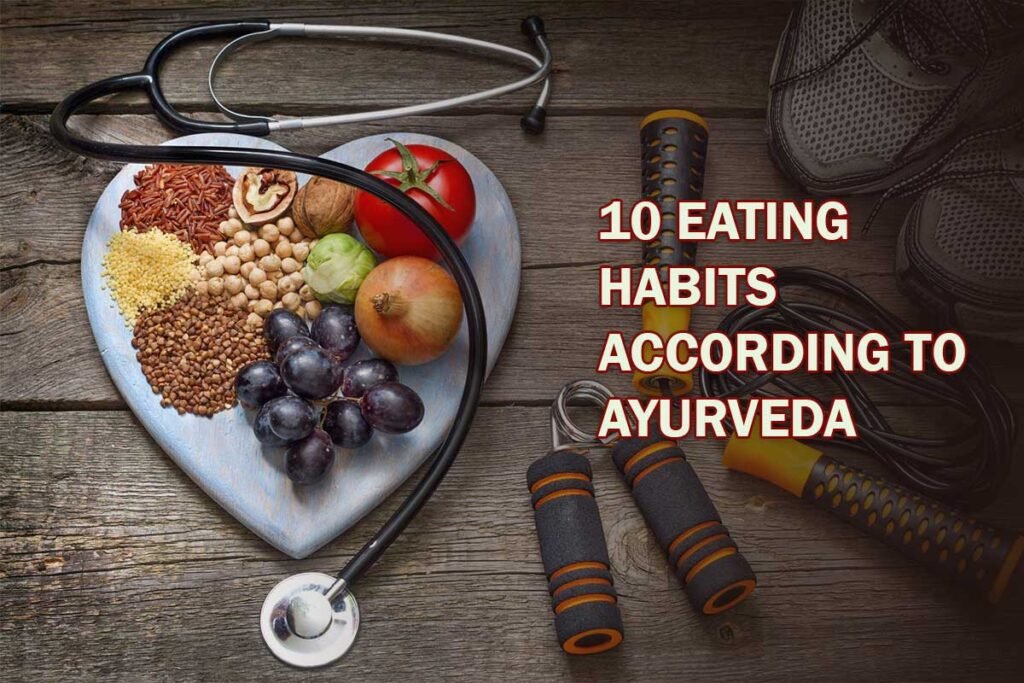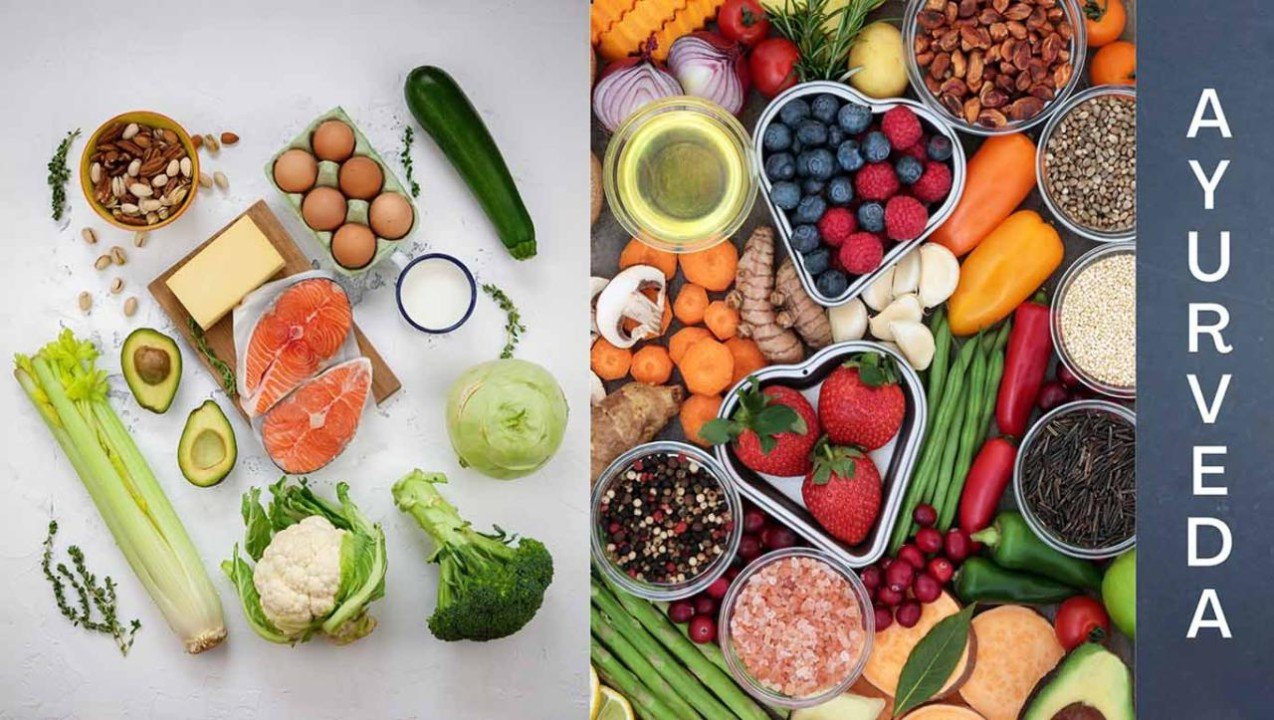In Ayurveda, it is believed that each bite you consume will hurt or heal you. Nutrition and food comprise approximately 50% of the remedies practiced in Ayurvedic medicine, and how well this works demonstrates just how much influence food has on our health and well-being.

The Ayurvedic diet begins with the premise that food is not just about pleasure or craving. It’s about what you’re eating, how it’s cooked, where you’re eating, who you’re eating with, and even your frame of mind when you’re eating. When we listen to these details, we can introduce more balance into our lives—just by changing the way we eat.
The Second Key: Knowing Your Dosha
The other key component of achieving balance using Ayurveda is knowing your individual dosha (Vata, Pitta, or Kapha). There’s a different dietary strategy for each, with food selection that counters your strongest characteristics. However, there are certain Ayurvedic eating guidelines that apply to everyone regardless of their dosha.

10 Ayurvedic Eating Principles

- Eat the right quantity – Not too much, not too little. To gauge your optimum portion, cup your hands together in the shape of a bowl (an open Anjali mudra—the gesture of giving). According to Ayurveda, you should not eat more than two of these “handfuls” of food in one meal. If you overeat, there will be no space for adequate digestion.
- Select warm, cooked foods – Cooked foods are better digested, and the nutrients such as vitamins and minerals are made more available.
- Reach for fresh, delicious, whole, and organic foods – Unprocessed foods contain more prana (life force energy), which charges our vitality and well-being.
- Take bites slowly and attentively – Chew thoroughly for digestion, but also make mealtime a sacred ceremony. It’s an opportunity to be in touch with gratitude, the Divine, and the pranic energy that sustains us.
- Eat at home more frequently – Food prepared with love in a loving environment is ideal. When eating out, choose restaurants that have organic, whole foods, vegetarian dishes, and salt-, sugar-, and preservative-free meals.
- Avoid unnecessary snacking – Have 4–6 hours between meals, and do not eat when your stomach is full. Also, sleep or exercise at least two hours after eating.
- Pair foods intelligently – Combine foods that complement each other, and do not mix extremes (such as extremely hot and extremely cold foods) in the same meal.
- Trend towards a predominantly vegetarian diet – In Ayurveda, meat is largely medicinal, not everyday fare, since it’s heavy, difficult to digest, and tamasic (numbing). If you do consume meat, use ethical sources and be observant of ahimsa (non-harm). Choose wisely rather than adhering to hard-and-fast rules—even vegetarians should make thoughtful choices if confronted with eating meat, as opposed to viewing it as a hard-and-fast restriction.
- Stay hydrated – Drink water consistently throughout the day, not in large gulps. How much you require depends on your environment, level of activity, and dosha.
- Don’t eat heavy meals in the evening – This is difficult, particularly during winter, but large evening meals delay digestion and cause mucus. Attempt to have your main meal earlier and light up the evenings.
These ten principles, which were based on Charaka’s ancient wisdom, were created to ward off disease and ensure longevity. Although they’ve been modified to fit contemporary living, they continue to provide a wise, equilibrated way of relating to food—enabling us to manage our health and wellbeing.
